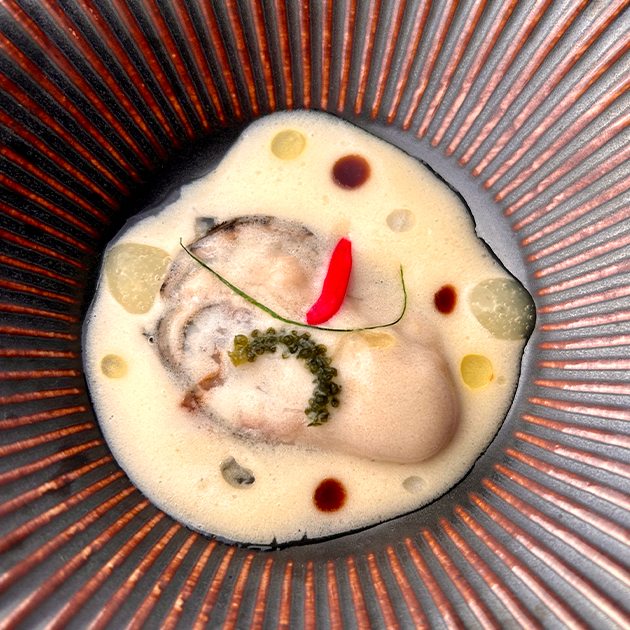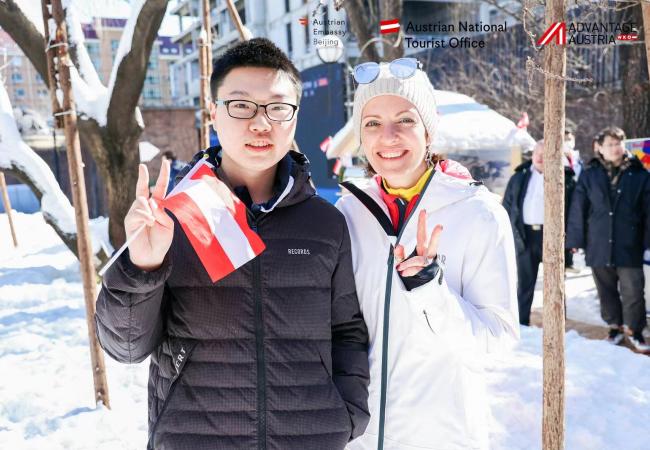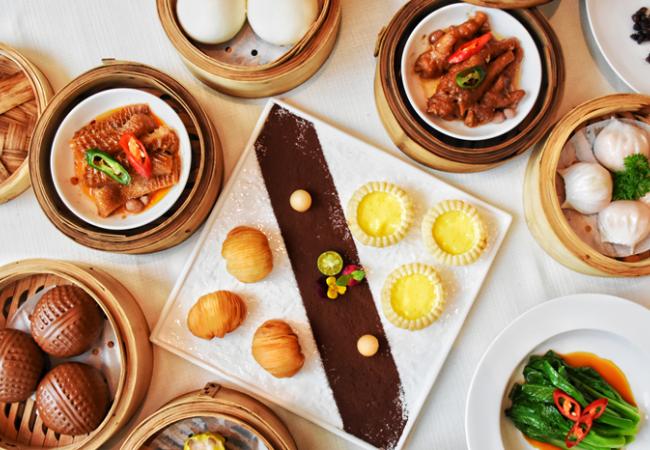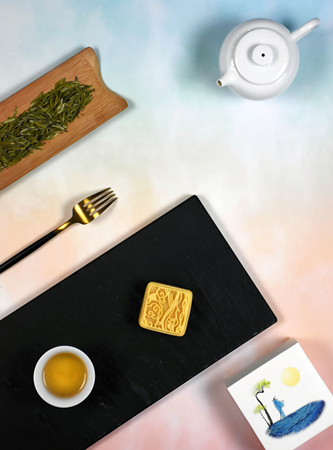2024年10月7日,西班牙,圣塞巴斯蒂安 (San Sebastian,Spain)。Arzak是进化和创造力的代名词,它仍然是Elena手中新巴斯克美食的灯塔,Elena今天将四个电影场景带到了餐厅,食材争夺主角。

餐厅的菜单就像一部电影,场景是序列,食材是代表它们的演员”,Elena Arzak开始说道,她对电影充满热情,在实验室负责人的陪同下,她想对剧本进行修改,解释一些精心处理的食材是如何自己发光或增强原始主角的作用的。
为了证明这一点,她选择了四个美味的序列,现场准备供观众欣赏。第一种是番茄串中的一日鱼,由鲭鱼组成,鲭鱼是比斯开湾的一种蓝色鱼类,用昆布海藻、盐和糖腌制,然后轻轻烤制,使皮肤焦糖化。作为配菜,“番茄抢尽风头,用大豆、米醋、糖和水的混合物变成一种果冻豆,然后煮沸并真空包装12小时,然后用葵花油保存”。在盘子里,鲭鱼的部分伴随着用盐角草属树枝腌制的西红柿和柠檬,这道菜还撒上了由安康鱼尾巴肉汤和欧芹油制成的胶原蛋白酱,以增加光泽。

在第二个序列中,两个对立的大人物争夺聚光灯,“最终他们结成了非同寻常的联盟”。这是一只Sorlut牡蛎,“肉质多汁,是一种奢华的食材,只需要一个微笑就能赢得镜头”,它浸在一种牛排乳液中,这种乳液非但没有掩盖它的味道,反而赋予了它巨大的细微差别。这道菜以石榴汁、海葡萄和黄原胶制成的亚洲柠檬凝胶为特色。
第三道菜是对一道像橙色鸭子一样普遍的菜肴的重新制作,在这种情况下是用兰德鸽子,因为鸭子仍然在起点。在这里,鸽子的胸脯被切成两半,煮得少了一点,取而代之的是“我们做过的最好的”橙汁,盘子里还放着角豆和橙汁。
演讲以一道甜点结束,“没有它,菜单就没有圆满的结局”,其中最受欢迎的是这个地方。因此,在盘子上,它们代表了“多米尼加共和国的有机可可种植园,完全由女性经营,芒果树和香蕉树等果树共存,赋予了可可非凡的细微差别”。它由芒果果肉制成的巧克力甘纳许,配以海鲜酱、可可和焦糖太妃糖,上面撒上无糖的奶油芝士饼干,为成分增添新鲜感,还有蜜饯橙皮和少量可可粘液,让它有点苦涩。
The star-studded side dishes that shine at Arzak
Synonymous with evolution and creativity, Arzak continues to be the beacon of new Basque cuisine in the hands of Elena, who today has brought four film scenes to the dining room, with ingredients competing for the leading role.
The menu of a restaurant is like a film, where the scenes are the sequences and the ingredients are the actors that represent them", began Elena Arzak, who is passionate about cinema and who, accompanied by the heads of her laboratory, wanted to give a twist to the script to explain how some well-treated ingredients come to shine on their own or to enhance the role of the original protagonists.
To demonstrate this, she chose four delicious sequences, prepared live for the audience's enjoyment. The first of these, a fish of the day in tomato strings, consists of mackerel, the blue fish that reigns in the Bay of Biscay, pickled in kombu seaweed, salt and sugar and lightly grilled to caramelise the skin. And as a side dish, "the tomato steals the show, transformed into a kind of jelly bean with a mixture of soy, rice vinegar, sugar and water, then boiled and vacuum-packed for 12 hours, then preserved in sunflower oil". On the plate, the portions of mackerel were accompanied by tomatoes and lemons pickled with branches of salicornia, and the dish was sprinkled with a collagen sauce made from the broth of the monkfish tails and parsley oil to add shine.
In the second sequence, two large antagonistic figures competed for the spotlight, "which in the end came together in an extraordinary union". It was a Sorlut oyster, "very fleshy and juicy, a luxurious ingredient that only needs a smile to win over the camera", immersed in a beef chop emulsion that, far from masking its flavour, gave it great nuances. The dish was rounded off with pomegranate juice, sea grapes and an Asian lemon gel textured with xanthan gum.
The third course was a remake of a dish as universal as duck with orange, in this case with Landes pigeon, because the duck is still in the starting blocks. And here the breast of the pigeon, cut in two and cooked a little less, gave way to an orange sauce "the best we have ever made", accompanied on the plate by a carob lokum and orange juice.
The presentation ended with a dessert 'without which there can be no happy ending to the menu', the star of which was the place. And so, on the plate, they represented "the organic cacao plantation in the Dominican Republic that supplies us, run entirely by women and where fruit trees such as mango and banana trees coexist, giving the cacao extraordinary nuances". It consisted of a chocolate ganache made with mango pulp, accompanied by a hoisin sauce and cocoa and caramel toffee, topped with fine cream cheese biscuits without sugar to add freshness to the composition, as well as candied orange peel and a minimal dose of cocoa mucilage to give it a hint of bitterness.







